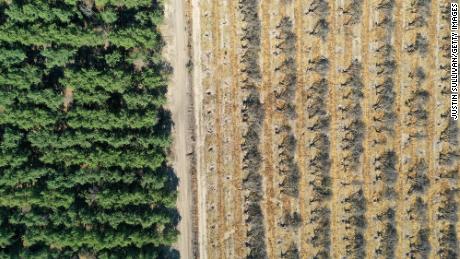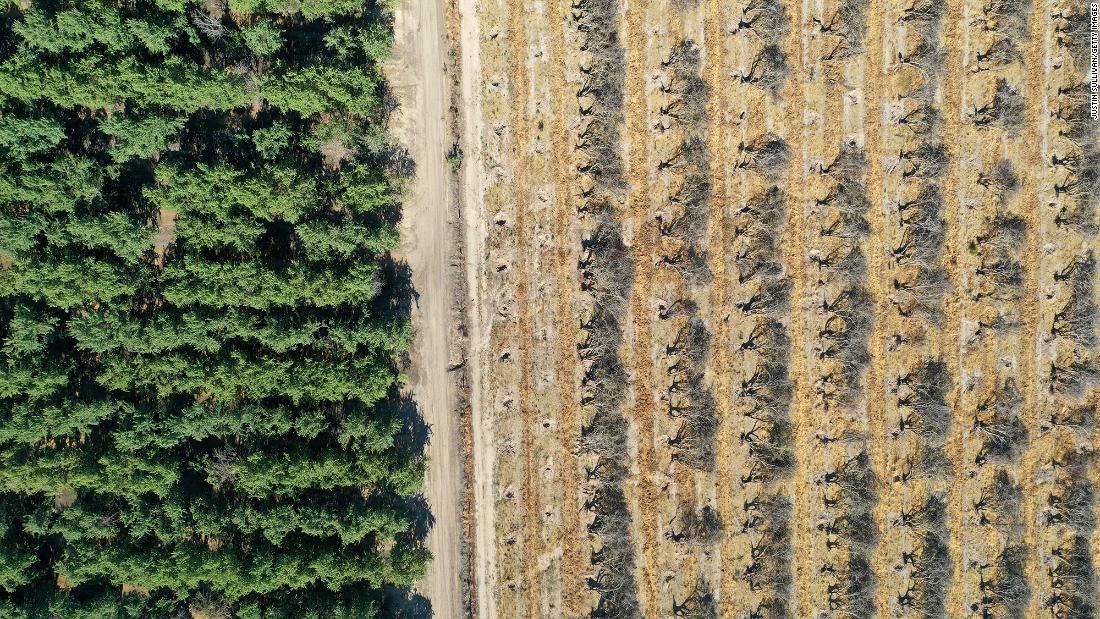For farmers like me, it seems like nowadays we have more bad years than good. Every season brings another unprecedented catastrophe, affecting crops regionally or all around the country. Remember the record winter storm in Texas, only four months ago? It caused
$600 million in agricultural losses, according to Texas A&M University. In addition to the current megadrought, which analysts describe as the worst in
1,200 years, in the past three years alone farmers have seen
record floods in the Midwest, “derecho” storms that
brought hurricane-force winds to Iowa and Illinois, and the
largest ever wildfire season in California, not to mention other
deluges,
droughts and
localized disasters that barely registered in the news cycle.
While the agricultural sector’s fate has always been tied to the weather, the severity of these events, as well as their increased frequency, makes it seem that climate change is having a hand in our weather patterns.
The agricultural industry is often
misunderstood by the general public, and we haven’t always been credited for being forward thinking on climate change. However today, more farmers recognize the evidence around us and are turning the tide. Data from the US Department of Agriculture (USDA) also shows that farmers are increasingly implementing
conservation practices that help mitigate climate change, although we still have a long way to go.
One reason for this shift is that sustainable farming is in our best interest — it’s good for our bottom lines and for ensuring the land’s viability for future generations. Farmers are finding that improved soil management can lead to higher and more consistent yields, while precision agricultural practices like soil testing and
variable rate fertilize application can reduce bills for fertilizer and other inputs.
On our farm, we use a number of conservation practices, and we keep up with the latest information from the
agricultural extension services at North Dakota State University. We plant cover crops and practice
no-till, minimum-till, and good water management to prevent erosion and preserve soil organic matter. We also do soil testing and use prescription fertilizer so that we only put down as much fertilizer as the crop is going to use — which reduces runoff and nitrogen emissions while also lowering our costs.


Rows of almond trees sit on the ground during an orchard removal project on May 27, 2021 in Snelling, California. As the drought emergency takes hold in California, some farmers are having to remove crops that require excessive watering due to a shortage of water in the Central Valley.
Climate change is a daunting issue, but farmers can be part of the solution by implementing good practices. A
recent report written by experts from Farm Journal Foundation and the Massachusetts Institute of Technology’s Joint Program on the Science and Policy of Global Change found that while agriculture contributes 10% of total US greenhouse gas emissions, existing climate-smart solutions — if put into wider use by farmers — could turn the industry into a net-carbon sink.
Some examples of these solutions include expanding efficient fertilizer application, renewable energy use, feed additives to help livestock reduce methane, and more radical innovations like methane digesters, big steel tanks that capture natural gas from livestock manure.
Cutting-edge
agricultural research conducted at
American universities is delivering new solutions all the time to help farmers adapt to and mitigate climate change. However, farmers often still face barriers to putting sustainable solutions into practice. For many, it comes down to costs.
Farming is a business that runs on tight margins — we are affected not only by the weather but also by volatile commodity prices. Because of this, many don’t have the start-up capital to invest in sustainability. We need incentives such as tax breaks, cost sharing, technical assistance or favorable loan terms for these investments to make financial sense.
There are already several USDA programs that help farmers improve their sustainability — such as the Conservation Stewardship Program (CSP), Rural Energy for America Program (REAP), and the Environmental Quality Incentives Program (EQIP). However, these programs are significantly underfunded, so not all farmers who apply actually receive assistance. According to a
2021 report by Farm Journal Foundation and MIT, only about 40% of EQIP projects received funding between 2000 and 2010. This is partly because of the focus on
reducing federal spending, which has led to a tighter budget for EQIP. In addition, applications for technical assistance from local USDA conservation offices frequently have long wait times, according to the report. Under the 2018 farm bill, EQIP and CSP, for example, are provided with $1.8 billion and $750 million respectively for FY 2021. This only makes a dent in what farmers across the country need to implement sustainable agricultural measures.
To enable more farmers to participate, the government needs to increase funding to these programs and others like them. It should also increase funding for agricultural research that helps farmers adapt to and mitigate climate change. In addition, Congress should pass the
Growing Climate Solutions Act, which would, among other things, help the agriculture and forestry industries reduce greenhouse gas emissions by providing technical assistance for farmers to enroll in carbon-credit markets. The bill passed the Senate and is awaiting a House vote.
Finally, government and industry groups need to do more to ensure that farmers are aware of the options that are available to them. Although conservation programs are in high demand, many farmers are busy with the day-to-day running of their businesses and don’t find out about opportunities and incentives until after the programs are already full.
Today, agriculture is an innovative, forward-looking industry, and farmers are putting more and more climate-smart solutions into practice. But to truly move the needle and secure a future for family farms like mine, the government needs to provide more support. Fighting climate change is a centerpiece of President Joe Biden’s policy platform. My hope is that farmers can do their part to ensure a sustainable future for us all.
![]()






